32 years after Op Bluestar, Damdami Taksal returns to preaching, education
The fountainhead of Sikh fundamentalism and once the nerve-centre of anti-government extremism under the fiery Jarnail Singh Bhindranwale, the Damdami Taksal has gradually embraced moderate moorings, shifting focus to religious education and preaching.
A fountainhead of Sikh fundamentalism and once the nerve centre of anti-government extremism under the fiery Jarnail Singh Bhindranwale, the Damdami Taksal has gradually embraced moderate moorings, shifting focus to religious education and preaching. Ironically, the venerable seminary is now under fire from the radical fringe for its proximity to the ruling Shiromani Akali Dal (SAD).
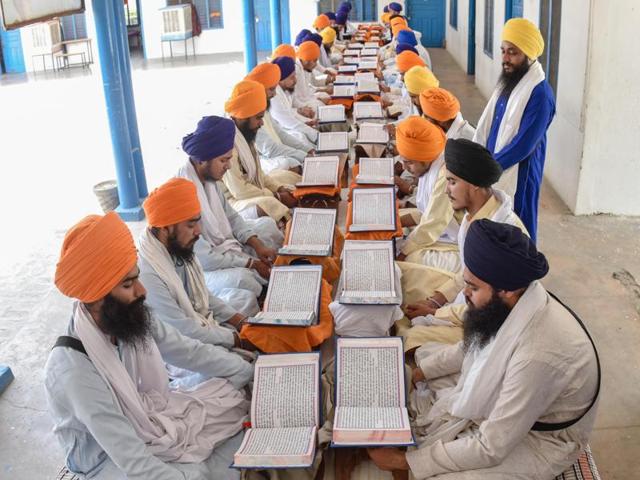
Damdami Taksal’s stamp on the recent murderous attack on Sikh preacher Ranjit Singh Dhadrianwale has brought the spotlight on the seminary yet again.
Association with violence is not new to the Taksal, headquartered at Gurdwara Gurdarshan Prakash at Chowk Mehta, about 40km from Amritsar. For almost 30 years since Operation Bluestar shifted the wheels of Punjab history, the 300-year-old Sikh seminary that was at the epicentre of militancy seemed to have been caught in a time warp.
In the past couple of years, it has made a concerted effort to recreate itself from the rubble and project itself as not just the custodian of the legacy of Jarnail Singh Bhindranwale, its 14th head, and Guru Gobind Singh, the last Sikh guru, but also the keeper of the ‘purest’ form of Sikhism, wedded to modernity.
Read: Bluestar Anniversary: Sikh radicals detained, SGPC bans media at Golden Temple
OF BHINDRANWALE’S LEGACY, AND POWER POLITICS
Beyond the school that it is, the Damdami Taksal is a religio-political institution that first shot into limelight in the recent past when Jarnail Singh Bhindranwale took over as its 14th head in 1977. He converted it into a fountainhead of fundamentalism and his followers into bands of militants seeking Khalistan. Majority of the 219 people killed fighting the army in Operation Bluestar were Taksal activists. Even today, Bhindranwale is everywhere in the Taksal, in life-size boards, pictures.
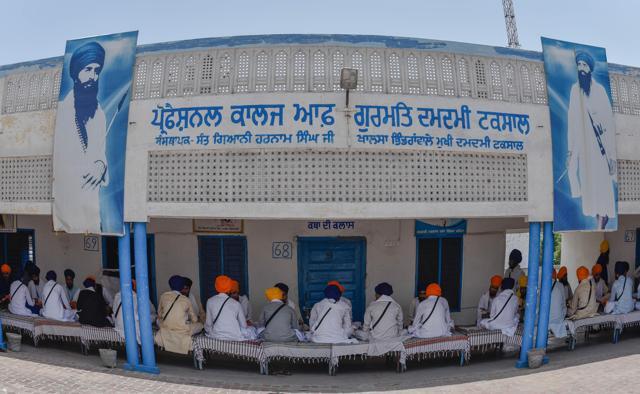
The Taksal continues to wield sway on Sikh minds, particularly those connected with the turmoil of the 1980s. The shaheedi samagam (martyrdom commemoration) on June 6, the anniversary of Bluestar, is undoubtedly the most important function the Taksal holds every year.
Even post-Bluestar, the Taksal emerged as a breeding ground for militants. At one time, it eclipsed the Shiromani Gurdwara Parbandhak Committee (SGPC), whose authority was undermined by hardliners; and called the shots in Sikh religious affairs. It lost its primacy when terrorism was stamped out and moderate Akalis gained prominence in the 1990s. Taksal has since mellowed down.
Today, among Panthic bodies outside the fold of mainstream Akalis and the SGPC, the Taksal remains a prime player. The moderate Akalis led by chief minister Parkash Singh Badal keep it on their right side.
Ahead of the 2012 polls, Badal acquiesced to the Taksal’s long-time pressure to build a memorial to Op Bluestar and Bhindranwale in the Golden Temple. Dhumma paid back by supporting the Akalis. Even after the recent sacrilege incidents when the SAD faced the heat, and anti-Badal radicals called a ‘Sarbat Khalsa’ (congregation), the Badals won over Dhumma who kept a distance from their show. No wonder, the government has been fighting shy of pinning the Dhadrianwale episode on the Taksal. It has ruled out a CBI probe and tasked the SGPC with brokering peace.
The wheel has come full circle for the Taksal since 1984, when it was the most radical of Sikh outfits. Paradoxically enough, the Taksal today is facing the ire of other Panthic bodies for allying with the moderate Akalis.
Read | No course left but stir, says Dhadrianwale; Dhumma calls Panthic bodies
IT’S IN THE LANGUAGE
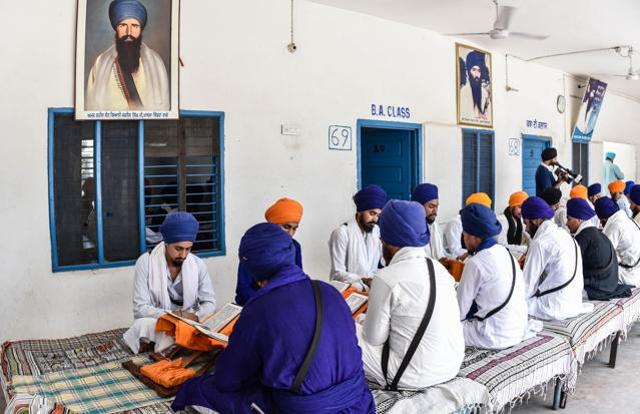
At the height of militancy three decades ago, when the three-century-old Damdami Taksal, then led by Bhindranwale, virtually called the shots in Punjab, English was ordered to be shunned. All instruction boards and posters, even those at schools and colleges, were ordered to have only Punjabi in Gurmukhi script, and be only in black and white or in the ‘colours of Sikhism’, blue and saffron.
Cut to now, the colour code stays within the seminary’s four walls, and it is obvious that the world has come to touch the Taksal. Freshly painted in blue, the room numbers stand out: Roman numerals, not the Gurmukhi script one expects on the walls of the ultra-puritan Sikh seminary. A large, saffron board explains the history of the place in precise English. Walking by one of the many classrooms on the eight-acre campus, one hears a teacher reading from a book of the English language to pupils.
The aura is strangely low-key, and thus captivating. Tall, strapping Sikhs immaculately dressed in a fitting chola (knee-length gown), complete with a long stole resting around their necks, white or blue, with their pagri (turban) tied in the typical Taksali way; the ‘Gurmukhi pagri’, as it’s called. Everyone is baptised and the kirpan (sword) hangs across the shoulder with a neat gatra (carrier belt). Not a hair out of place. Sitting on chairs, the young men, no women, are totally unlike any other youngsters; they are pursuing a bachelor’s degree from a college affiliated to Guru Nanak Dev University, Amritsar.
Read: Operation Bluestar anniv: CCTV cameras keep vigil in Amritsar
DEGREE ON OFFER
Three years ago, the Taksal started a professional degree course in ‘gurmat sanchar’ (spread of the Guru’s word), and the first batch just finished its exams. The course was started as it gives Taksal students a valid graduate degree and they learn English as a compulsory subject. The Guru’s word has to travel across seas too.
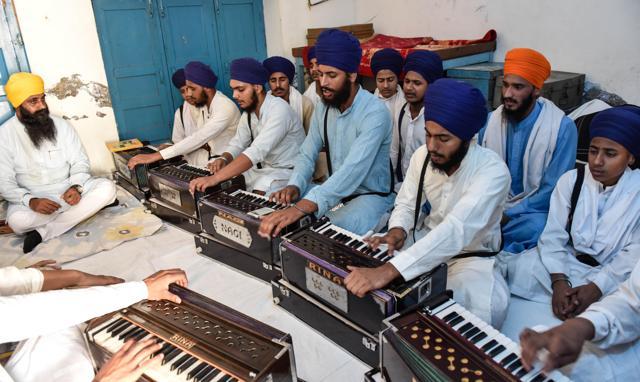
“English is needed everywhere in the world. Our certificate, and now this degree, is the most coveted among gurdwaras that are looking for men who can recite (santhya) the Guru Granth Sahib the right way, and do the katha (story-telling) and vyakhya (interpretation) properly. No one in Punjab teaches these three things better than we do,” says Jiwa Singh, in-charge of the Taksal’s educational institutions.
OTHER PROGRAMMES
Apart from the professional degree course that has 60 students, there are two other learning programmes being run by the Taksal with over 200 students. The ‘open school’ can be attended by anyone, of any age. “But once you are here, you have to be a Sikh and abide by the Rehat Maryada (code of conduct),” explains Jiwa Singh. “We get children who are barely five years old too. Poor parents leave them here; or those who are orphans are left here by the villagers. There is no bar of age or religion for anyone to enter this place.”
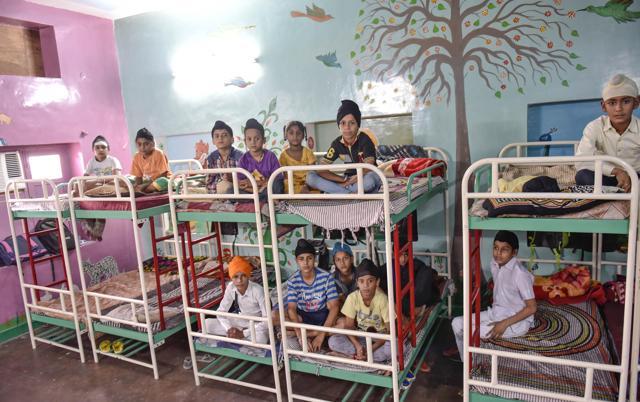
The School of Gurmat Sanchar takes in students who have completed Class 10 or 12, and they are taught the same way.
Depending on the level they have attained, students get the gutka, pothi or sainchi — various texts that are excerpted from Guru Granth Sahib or carry gurbani as such — and they sit on long wooden beds to recite it aloud. Every student starts with the learning of the Gurmukhi alphabet. Our kaida (booklet of the alphabet) — as also the other religious books — are printed by the Taksal, and include the toughest of sounds that the students have to learn to read properly. The printing of the other books is also done differently — several words are joined together so that the student is not able to look up while reading the text. “It improves concentration,” explains Bhai Gursewak Singh, a prominent sevak (volunteer/worker).
It can take up to two years just to learn the basics. The total course can take up to five years. “Once the student is ready, he is given a certificate by the Taksal. This can get you a job in gurdwaras anywhere. We get queries almost every day from embassies of various countries to verify the certificates so that visas can be issued to work in Sikh shrines,” he adds.
STRICT REGIMEN
The regimen is not just about the number of years. It is every day. Wake up by 4am, take a bath, and say the first set of prayers. After breakfast, classes begin at 8.30 am and continue for two hours. There is a break till 2pm for the open school students before a next set of classes. But those pursuing the degree have only a short break before regular college classes begin. These are followed by the evening classes, and then practice of gatka, the Sikh martial art of war.
All students have to work on campus, help in the kitchen, clean the rooms, wash clothes; there are no servants. “Serving food in the langar (community meal), cleaning utensils, such acts keep the mind humble (mann neeva) and open to knowledge,” adds Jiwa Singh. There are no air-conditioners, only fans. The beds are hard and, other than the strictness imposed by the teachers, students are bound by the Maryada. No one can speak loud, or crack jokes. No popular music.
“Students are not allowed to keep mobile phones but they do smuggle them in,” smiles Jiwa Singh. Almost half the students leave the course midway, unable to bear the regimen.
About the guns and swords that the Taksal activists carry prominently, Jiwa Singh said there are no weapons kept inside the Taksal “anymore”: “All the guns with Taksal activists are licensed. In any case, weapons these days hardly need any special training.”
There are also parents who come with their girls wanting to join the Taksal. But for the time being, the Taksal says it has “no infrastructure to accommodate them”. “We will have to a build a separate campus for them. The students and sewaks who are married also live in quarters outside the campus,” explains Jiwa Singh.
GOING ONLINE
In another sign of change, the Taksal has two Facebook pages; and one of its head Harnam Singh Dhumma. Several other FB pages in the name of the Taksal are being run in the UK, Australia, and New Zealand. The authorities post messages and daily events on these pages as also videos of katha (discourse) by its sevaks. A host of websites claim to be Taksal’s “official” portal, but the Taksal is now working on restricting the use of its name to their official website being run from Chowk Mehta.
SET-UP AND THE LAST WORD
“The Taksal works with a sense of purpose, laid down and interpreted by the head,” explains Gursewak Singh. Current head Dhumma is credited with giving the Taksal a renewed sense of relevance “by blending in modernity without compromising on its basic foundation.”
The day-to-day management is carried out by a set of prominent sevadars. “Seniority is established by your work and study. There is no other criterion, not even age,” he adds.
The primary source of income is donation from the sangat (followers). There are 100 acres of farm land cultivated by the Taksal, which also runs a charitable hospital and a CBSE-affiliated private school and a college. This school and the college are run on a “no-profit, no-loss basis”; and are just like other schools and colleges. “Students of all religions can study there and anyone can come into the 30-bed hospital which offers several specialised services,” says Gursewak Singh. “There is a growing feeling that Taksal gets a whole lot of money from abroad; but that’s not true. There are donations which come in from other countries, but the seminary mainly runs on donations given by the sangat in Punjab,” he insists.
WHERE YOU GET BAPTISED
Other than the religious education, Taksal’s primary function is to distribute amrit (holy nectar) and baptise Sikhs. “We do it every Sunday and also on sankrant (first day of every lunar month). Other than these days, if a group of persons comes in on any other day, we do it especially for them. We also do amrit sanchar at our other centres in Punjab.” Taksal has branches in California and Las Vegas in the US.
Yes, Las Vegas, the city globally known for its gambling and partying culture. “In the midst of all the activities that the place is known for, we have managed to bring in a shade of purity,” says Taksal head Dhumma.
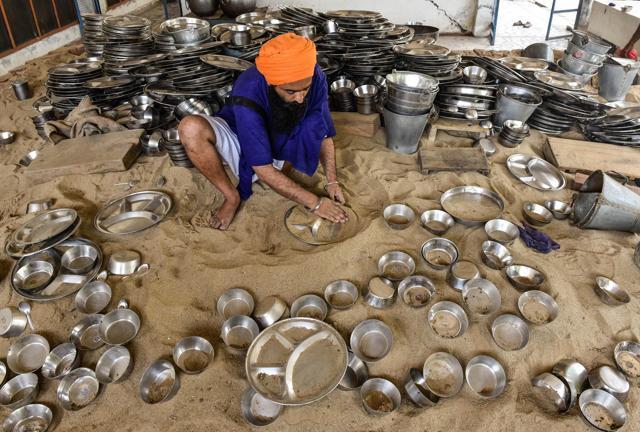
STRICT TENETS
Damdami Taksal practises a rehat maryada (Sikh code of conduct) stricter than the one prescribed by the SGPC. Tenets include:
O Colour-defined dress code: black, white, blue and saffron
O Langar cooked, eaten in iron utensils
O Pure vegetarianism; even utensils cleaned with soil (pic on right), as soap has animal fat
O No intoxicant to be consumed
O The kada (bracelet) worn by the seminary’s inmates and followers, has to be of sarb-loh (iron), not steel
O Taksal also recognises and respects Dasam Granth, which they believe was penned by Guru Gobind Singh
VIOLENT LEGACY
1978: Nirankari sect followers and Akhand Kirtani jatha clash, leaving 13 dead
1983: Bhindranwale moves into Akal Takht, fortifies Golden Temple complex
1984: Op Bluestar and death of Bhindranwale
1984: Thakur Singh takes over
2005: Harnam Singh Dhumma takes over as 16th head
2014: Op Bluestar Memorial built by Taksal in Golden Temple complex





